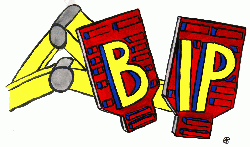Analysis and control of human and robotic walking
Because of the changes of the dynamic behaviour that happen at every change of support, human and robotic walking can be seen as a nonsmooth dynamical system, and if convex analysis and measure differential equations are the adequate mathematical tools to study such systems, they are very unusual tools in robotics, nearly incongruous in biomechanics. Now, the mathematical analysis of these systems progressed a lot, building on these theoretical tools, but the corresponding control theory still has to be written: stability, asymptotic stability, passivity, commandability theorems, necessary and sufficient conditions in optimal control...
Human and robotic walking presents another particularity: its main goal, moving around without falling, is a viability goal, what is again outside the usual scope of control theory. The main difficulty with this viability concept is that it is generally impossible to compute: the point then is to get as close as possible to it with computable tools.
These two aspects of human and robotic walking make it a singular numerical and theoretical research theme, open and wide, for which our first goal is to propose a coherent and homogenous framework, building in our case on a careful and intensive use of the theoretical and numerical tools of optimization.
There is indeed a strong need for such a framework: the walking robots field is rising very steeply, with important investments from research organisations and corporations in Asia, USA and Europe. But this rise still relies on “technical” solutions, limited by nature, by lack of an adequate framework. The biomechanics of movements also needs to rely on a coherent framework to build a synthetic theory of movements that is still very rough today. Indeed, the will to rehabilitate paraplegic people to walking through an artificial stimulation of their paralyzed muscles clearly shows the inexistence of such a synthetic theory of human movements.
And, if the initial impulse of these researches comes from the analysis and control of walking, they concern fundamental problems and can be applied to numerous other domains of robotics --manipulation, for example, is a symetric problem to locomotion-- and more generally of applied mathematics --modelling, simulation, identification, control.

Click on the image to see some results, or below for:
main scientific publications.